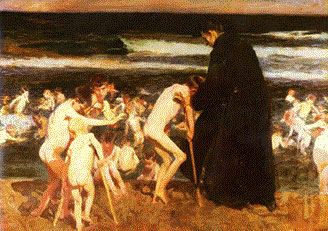Medicinal plants used in child health
Abstract
The aim was to identify medicinal plants used in child health, for family farmers and the ecological base of the southern Rio Grande do Sul, Brazil. The research approach is qualitative, exploratory and descriptive, with data collected from January to May 2009. The subjects were eight families of farmers, residents in the cities of Pelotas, Morro Redondo, Canguçu and Arroyo do Padre. Six plants were cited (Chrysanthemun cinerariifolium, Foeniculum vulgare, Acca sellowiana, Citrus sp. Origanun sp. Sambucus spp.), and only for one (Foeniculum vulgare) were pharmacological studies found that corroborated what the subjects mentioned. It is extremely important that the nurse has knowledge of medicinal plants to transmit relevant information about the preparation, dosages and indications related to plants used in child health.Downloads
-
Abstract381
-
PDF (Español (España))735
-
PDF (Português )735
The works published in this magazine are subject to the following terms:
1. The Publications Service of the University of Murcia (the publisher) preserves the copyright of the published works, and encourages and allows the reuse of the works under the license for use stated in point 2.
© Servicio de Publicaciones, Universidad de Murcia, 2011 (© Publications Service, University of Murcia, 2011)
2. The works are published in the electronic edition of the journal under Creative Commons Reconocimiento-NoComercial-SinObraDerivada 3.0 España(texto legal) “ a Attribution-NonCommercial-NoDerivatives 3.0 Spain license (legal text)”. They can be copied, used, broadcasted, transmitted and publicly displayed, provided that: i) the authorship and original source of their publication (journal, publisher and URL) are cited; (ii) are not used for commercial purposes; iii) the existence and specifications of this license is mentioned.
3. Conditions of self-archiving. Authors are allowed and encouraged to electronically disseminate the pre-print (pre-reviewed ) and / or post-print (reviewed and accepted for publication) versions of their works prior to publication, as it ensures a wider circulation and dissemination which may lead to a possible increase in its mention and a higher scope among the academic community. RoMEO color: green.













